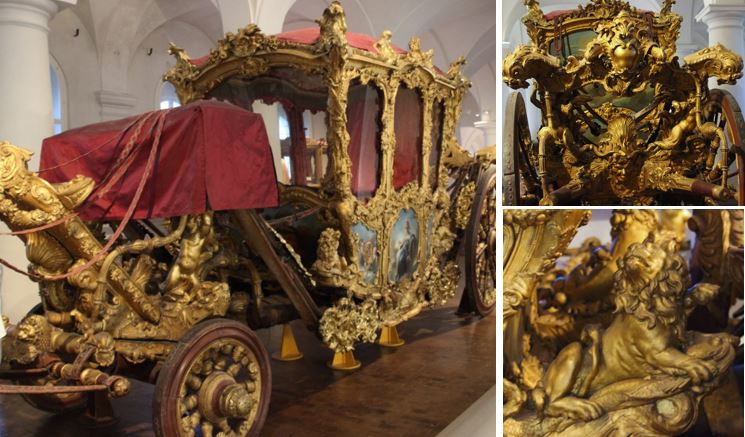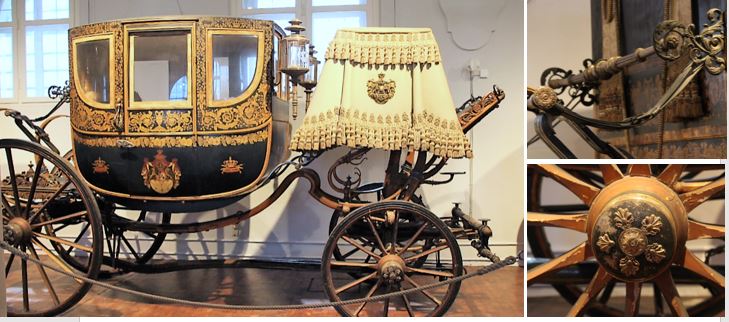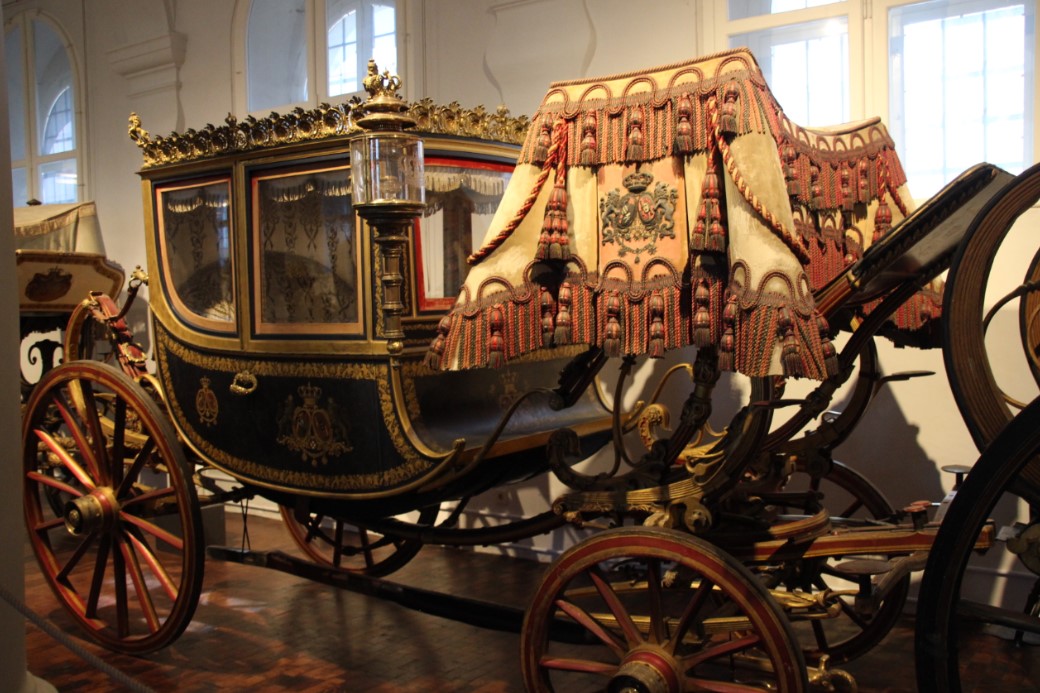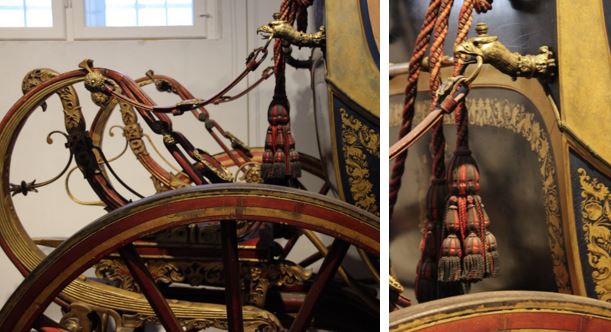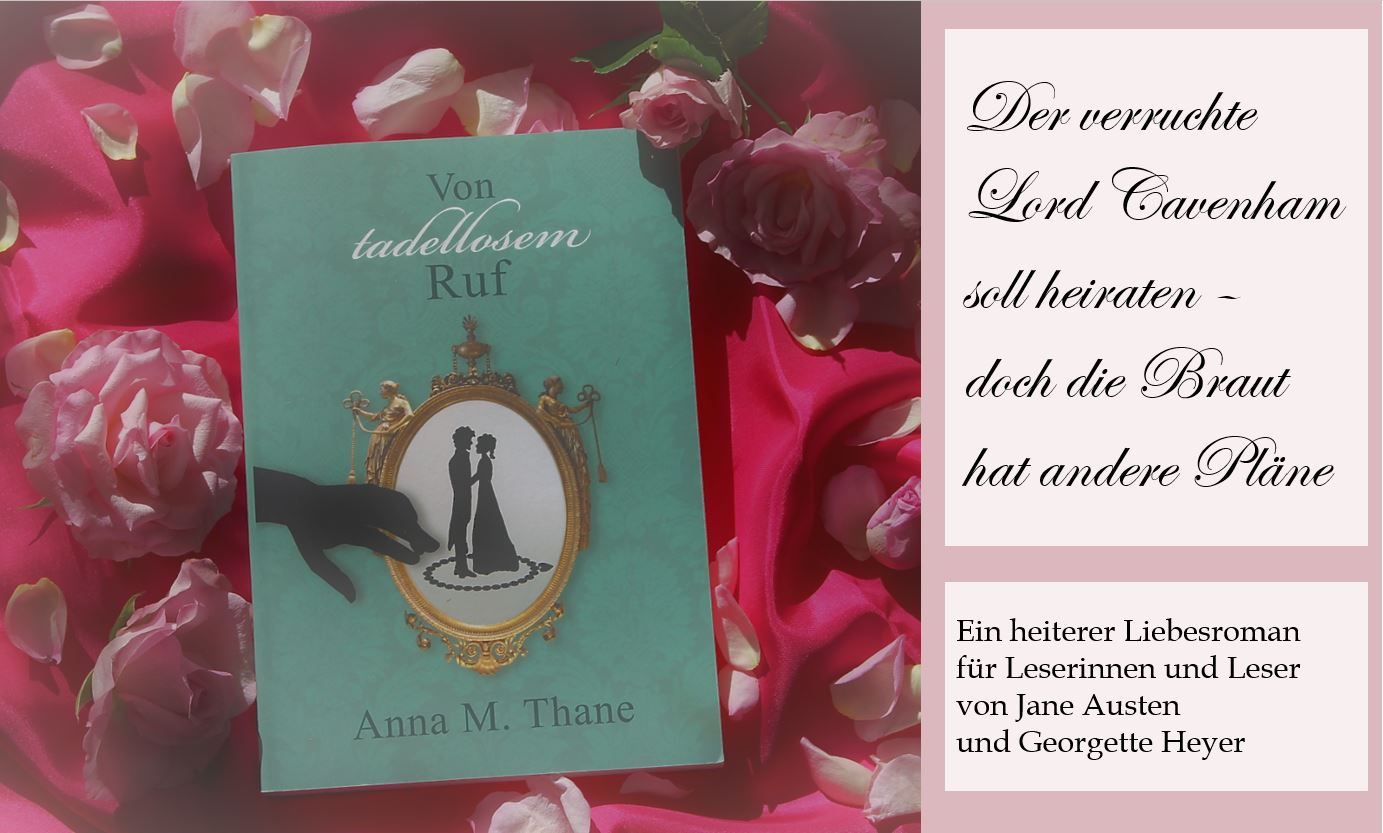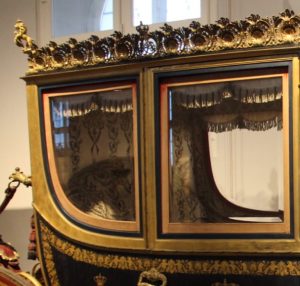 Like cars today, carriages were the subject of changing tastes and fashions. Stately carriages are an ideal object to study the influence of fashion on their design.
Like cars today, carriages were the subject of changing tastes and fashions. Stately carriages are an ideal object to study the influence of fashion on their design.
During the Baroque Age carriage where heavily decorated with symbols of power, such as figures of gods or animals representing power. In the Napoleonic Era a greater restraint and elegance became popular, it’s predominant artistic style being Neoclassicism. We will find out why in this post.
The Carriage of the Baroque Age
The photo below shows a typical coach of the Baroque Age, loaded with large and heavy ornaments. The state coach was made in France around 1720 and used for the coronation ceremony of Emperor Karl VII in 1742. It features four lions as a symbol that the Emperor is the mightiest of all earthly rulers.
Karl VII noted in his diary: “All are agreed that no coronation was ever more glittering and more marvellous than mine.”
The Style of the Napoleonic Era
During the Napoleonic Era taste in fashion, fabrics, upholstery and furniture radically changed. Popular became a greater restraint and elegance in artistic production. Why?
Napoleon himself used art, and every visual medium to promote himself. He was a brilliant marketer and self-promoter. He adopted symbols of ancient Rome and the so called Neoclassical style – serious, monumental and quietly grand – to underline the conception that he was a descendant of the leaders of the Roman Empire. He rejected the symbols of Capetian and Bourbon kings.
Generally, decorative art is a decisive indicator of the mentality of a period. The French nation called for images to celebrate its liberty, strength and grandeur. The new class of wealthy citizens followed Napoleon’s lead: They rejected the symbols of the ancient regime and looked to ancient Rome and Greece instead. They also chose images of contemporary events, scenes from the exotic places of Napoleon’s expeditions, and romantic or dramatic landscapes for interior decoration and paintings.
The Carriage of the Napoleonic Era
Vehicles of the Napoleonic Era period are rare, as it comprised only a short period of time. I am therefore happy to show you two beautiful carriage of this period. They belonged to Napoleon’s stepson Eugène de Beauharnais (1781 –1824). He was declared heir presumptive to the Kingdom of Italy in 1806. After the fall of Napoleon in 1814, Eugène retired to Munich / Bavaria. He was made Duke of Leuchtenberg in 1817. Eugène de Beauharnais spent his later years trying to assist French soldiers who had served with Napoleon and himself and had fallen on hard times.
The carriages below were in his possession during his time in Bavaria. Designed in the Neoclassical style they are strikingly elegant, calm, but still speak of power.
Source
Marstallmuseum Nymphenburg, Schloss Nymphenburg 208, 80638 Munich, Germany
Related articles
Temptations for Regency Gentlemen: The Most Dashing Sports Vehicle

